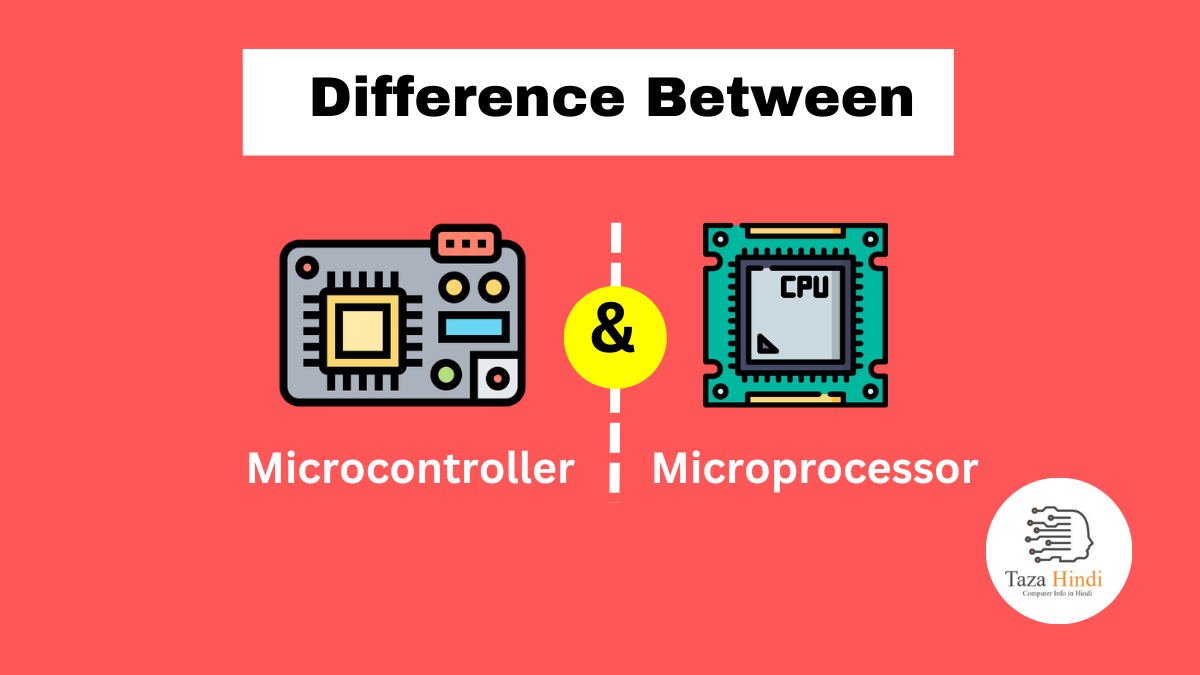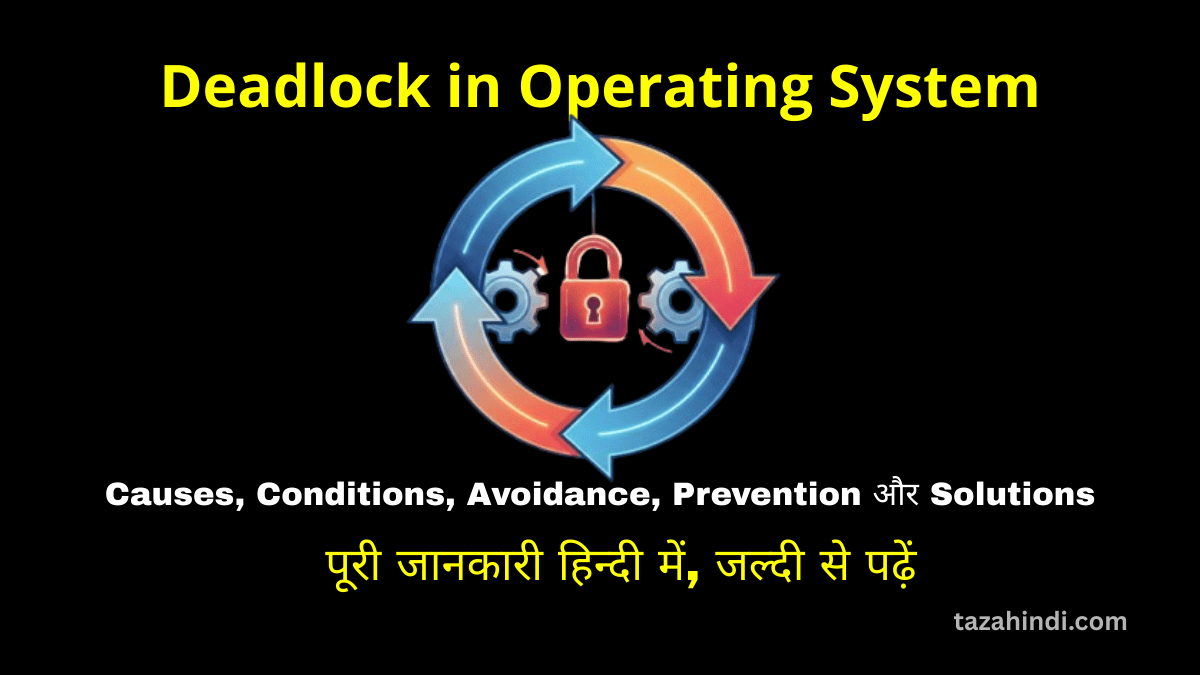In the realm of embedded systems and digital electronics, two key components play a crucial role: microcontrollers and microprocessors. These devices are the brains behind countless electronic systems and devices we encounter in our daily lives. While they share similarities in terms of functionality, they have distinct differences that set them apart. In this article, I will explain what is Microcontroller and Microprocessor, their components, Architecture, Characteristics, Features, uses and then explore what are the main difference between Microcontroller and Microprocessor.
What is a Microcontroller?
A microcontroller is a compact integrated circuit (IC) that consists of a processor core, memory, and various peripherals on a single chip. It serves as the central processing unit (CPU) for small-scale embedded systems and applications. Unlike microprocessors, which require external components for proper functioning, microcontrollers are self-contained systems that can be programmed to perform specific tasks.
Components of a microcontroller
A typical microcontroller comprises the following components:
- Central Processing Unit (CPU): The CPU acts as the brain of the microcontroller, executing instructions and performing calculations.
- Memory: Microcontrollers have various types of memory, including program memory (ROM or flash memory) for storing the program code and data memory (RAM) for temporary storage during program execution.
- Input/Output (I/O) Ports: These ports enable the microcontroller to communicate with external devices and sensors, allowing it to receive inputs and provide outputs.
- Timers and Counters: Microcontrollers often include built-in timers and counters that facilitate tasks such as generating accurate delays, measuring time intervals, and performing frequency calculations.
- Analog-to-Digital Converter (ADC): The ADC allows the microcontroller to convert analog signals, such as temperature or voltage, into digital values that can be processed by the CPU.
Also Read : Difference between File System and DBMS
Architecture of a microcontroller
Microcontrollers generally follow a Harvard architecture, which means they have separate program and data memories. The program memory contains the instructions that the microcontroller executes, while the data memory stores variables and other data used during program execution. The CPU fetches instructions from the program memory and performs operations on data stored in the data memory.
Characteristics of a microcontroller
Microcontrollers possess several distinct characteristics:
- Low Power Consumption: Microcontrollers are designed to operate on low power, making them suitable for battery-powered devices and energy-efficient applications.
- Real-Time Processing: They excel in real-time applications that require quick response times, such as control systems, robotics, and automation.
- Embedded Systems Integration: Microcontrollers are widely used in embedded systems, where they control and monitor various hardware components and peripherals.
Also Read : Difference between Stack and Queue
Features of a microcontroller
Microcontrollers offer various features that enhance their functionality and versatility, including:
- Interrupts: Microcontrollers support interrupt-driven programming, allowing them to respond promptly to external events or signals.
- Serial Communication: They have built-in serial communication interfaces like UART, SPI, and I2C, enabling communication with other devices.
- Clock and Timer Modules: Microcontrollers include clock and timer modules that provide precise timing and synchronization for critical operations.
Real-world examples and use cases of microcontrollers
Microcontrollers find application in numerous industries and sectors. Some common real-world examples and use cases include:
- Home Automation: Microcontrollers are utilized in home automation systems to control lighting, security systems, temperature regulation, and smart appliances.
- Automotive Electronics: They are integral to automotive electronics, controlling engine management systems, safety features, entertainment systems, and communication interfaces.
- Medical Devices: Microcontrollers play a vital role in medical devices such as insulin pumps, pacemakers, blood glucose meters, and patient monitoring systems.
- Consumer Electronics: Many consumer electronics devices, such as smartphones, smartwatches, gaming consoles, and remote controls, rely on microcontrollers for their functionality.
Also Read : Difference between Static and Dynamic Memory Allocation
What is a Microprocessor?
A microprocessor is an electronic chip that functions as the central processing unit (CPU) of a computer or digital system. Unlike microcontrollers, microprocessors require external components and peripherals to form a complete working system. They are typically found in personal computers, servers, and high-performance computing devices.
Components of a microprocessor
A microprocessor consists of the following components:
- Arithmetic Logic Unit (ALU): The ALU performs arithmetic and logical operations on data, such as addition, subtraction, AND, OR, and XOR.
- Control Unit: The control unit manages the flow of data and instructions within the microprocessor, ensuring proper execution of program instructions.
- Registers: Microprocessors have various registers, including general-purpose registers, which store data during program execution, and special-purpose registers for specific tasks.
- Cache Memory: Microprocessors often have cache memory, which is a small, high-speed memory used to store frequently accessed data and instructions for faster processing.
Also Read : Difference between Class and Structure
Architecture of a microprocessor
Microprocessors generally follow the Von Neumann architecture, where program instructions and data are stored in the same memory space. The CPU fetches instructions from memory, decodes them, and executes the corresponding operations. Data is also fetched from memory and processed within the microprocessor.
Characteristics of a microprocessor
Microprocessors possess distinct characteristics, including:
- High Processing Power: Microprocessors are designed to handle complex calculations and process large amounts of data, making them suitable for high-performance computing tasks.
- External Peripherals: Unlike microcontrollers, microprocessors require external components and peripherals, such as memory modules, input/output devices, and support chips, to function as complete systems.
- Multitasking Capability: Microprocessors can execute multiple tasks concurrently through multitasking techniques like time-sharing and multiprocessing.
Also Read : Difference between Constructor and Method
Features of a microprocessor
Microprocessors offer various features that enhance their performance and versatility:
- Instruction Set: Microprocessors support a wide range of instructions that enable the execution of complex operations and calculations.
- Clock Speed: The clock speed of a microprocessor determines the number of instructions it can execute per second, with higher clock speeds resulting in faster processing.
- Caches and Pipelining: Microprocessors employ techniques like caches and pipelining to optimize memory access and instruction execution, improving overall performance.
Real-world examples and use cases of microprocessors
Microprocessors are prevalent in various computing devices and systems. Some notable real-world examples and use cases include:
- Personal Computers: Microprocessors power personal computers, laptops, and tablets, allowing users to perform tasks such as web browsing, document editing, and multimedia playback.
- Servers: Microprocessors are essential components of servers, enabling them to handle multiple user requests, serve web pages, process databases, and perform complex calculations.
- Gaming Consoles: Gaming consoles utilize microprocessors to render realistic graphics, process complex gaming algorithms, and provide immersive gaming experiences.
- Industrial Control Systems: Microprocessors find applications in industrial control systems, including factory automation, process control, and robotics, where they perform real-time monitoring and control functions.
Also Read : Difference between DBMS and RDBMS
Difference between Microcontroller and Microprocessor
| Microcontroller | Microprocessor |
| Microcontrollers excel in real-time applications that require quick response times, such as control systems and automation. | While microprocessors are better suited for tasks that do not require real-time processing. |
| Microcontrollers are simpler in design and architecture, with limited resources and functionalities. | Microprocessors are more complex, capable of complex calculations. |
| Microcontrollers are often programmed using low-level languages and specialized integrated development environments (IDEs) tailored for embedded systems. | Microprocessors are programmed using high-level languages and general-purpose IDEs. |
| Microcontrollers find extensive use in applications such as home automation, automotive electronics, medical devices, and consumer electronics. | Microprocessors, on the other hand, are commonly found in personal computers, servers, gaming consoles, and industrial control systems. |
Also Read : What is Moonlighting, Pros and Cons of Moonlighting
Conclusion
Microcontrollers and microprocessors are key components in the world of embedded systems and digital electronics. While both serve as processing units, they differ in terms of integration, purpose, power consumption, real-time processing capabilities, complexity, cost, and application areas. Understanding the distinctions between microcontrollers and microprocessors is crucial when selecting the appropriate component for a particular application. By considering the requirements, power constraints, and processing needs of a project, developers can make informed decisions and harness the full potential of these powerful devices.
FAQs
-
Can a microcontroller be used as a microprocessor?
While a microcontroller and a microprocessor share similar functionalities, they have different architectures and purposes. While a microcontroller can be used in some cases to perform tasks typically associated with a microprocessor, it may not be the most efficient choice due to limitations in processing power, memory, and external peripheral support.
-
Are microcontrollers and microprocessors interchangeable?
Microcontrollers and microprocessors are not interchangeable in all cases. The choice between the two depends on the specific requirements of the application. Microcontrollers are better suited for embedded systems and applications that require real-time processing and low power consumption, while microprocessors are more versatile and suitable for general-purpose computing tasks.
-
Can I program a microcontroller and a microprocessor in the same way?
Programming a microcontroller and a microprocessor involves different approaches. Microcontrollers often require low-level programming using specialized languages and IDEs specific to embedded systems. Microprocessors, on the other hand, can be programmed using high-level languages and general-purpose IDEs. The choice of programming method depends on the architecture and development tools provided by the respective device.
-
What are some popular microcontroller and microprocessor brands?
There are numerous microcontroller and microprocessor brands available in the market. Some popular microcontroller brands include Microchip Technology, Atmel, Texas Instruments, and STMicroelectronics. Popular microprocessor brands include Intel, AMD, ARM, and Qualcomm.
-
Can a microcontroller and a microprocessor be used together in a system?
Yes, it is possible to use both a microcontroller and a microprocessor together in a system. This configuration is often employed in complex applications where the microcontroller handles specific control functions and real-time tasks, while the microprocessor handles general-purpose computing and advanced processing requirements. The combination of both components allows for a more efficient and optimized system design.



